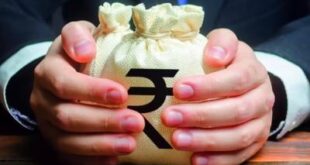While some forms of drip pricing could be aimed at fleecing customer, there are also cases where it may be unavoidable

Based on consumer feedback, it appears that governments across the globe have woken up to the malpractice of drip pricing. Recently, US President Joe Biden and British Prime Minister Rishi Sunak had talked about taking action against drip pricing. In India, the Department of Consumer Affairs has asked customers to be careful about the practice of drip pricing. Let us take a look at what is drip pricing and how you can protect yourself from being fleeced.
What is drip pricing?
In simple words, drip pricing is a technique used by businesses to attract customers via an affordable initial price. Once the customer has committed to the purchase, additional fees and charges are added during the purchasing process. As a result, the consumer ends up paying a lot more than the original price that was advertised. While this may seem like a malpractice, it may not be the case in every situation. For example, some taxes and service charges are imposed by the government. These cannot be avoided by the business entity.
However, there are many cases where drip pricing can be used to extract a higher price from customers. Let us take a look at some examples to better understand the applicability of drip pricing.
Hotels and restaurant businesses – These entities are often accused of using drip pricing techniques. Customers may be asked to pay additional charges such as parking fees, Wi-Fi access, resort fee and charges for other amenities such as gym, spa, sauna, etc.
Airlines – Users may be charged extra amount for food and drinks, choosing the preferred seat, priority boarding, fees for checked baggage, etc.
Food delivery apps – Food prices are listed as quite affordable on food delivery apps. But the final payment amount includes additional charges such as packaging fees, handling charges, etc. The restaurant itself may not charge these amounts if you pick up the food directly from the restaurant. Such charges make a strong case for the malpractice of drip pricing.
Online shopping – Here too, users have to pay additional amounts for handling charges, platform fee, etc. Many online e-commerce platforms also accept donations from users, which is added to the final bill.
Ticket sales – A wide variety of additional fees and charges are often applied for ticket sales. For example, customers may be asked to pay service fees, convenience charges, processing fees, venue charges, delivery fee, etc.
How to protect yourself from drip pricing?
The government is working to create awareness, so that consumers can be protected from such malpractices. The practice of drip pricing has been classified under ‘unfair trade practices’, as per the Consumer Protection Act, 2019. Guidelines to prevent such practices have been issued by the Central Consumer Protection Authority.
Users who come across a case of drip pricing can approach the Consumer Affairs for help and assistance. They can dial 1915 or use the WhatsApp number 8800001915 to contact Consumer Affairs. This is a great initiative launched by the government to protect consumers from potential cases of drip pricing. It also serves as a warning to entities that may be deliberately inflating prices to fleece customers.
 Newspatrolling.com News cum Content Syndication Portal Online
Newspatrolling.com News cum Content Syndication Portal Online





